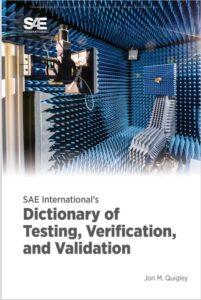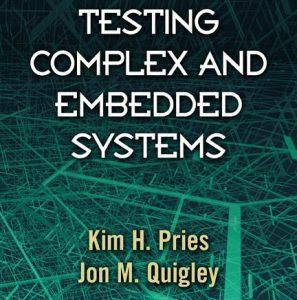Limits of Testing to Standards and Specifications
By: Jon M. Quigley
Introduction: Why Testing to Standards and Specifications Matters
In product development, testing to standards and specifications is essential, but not necessarily paramount. It ensures that products meet regulatory requirements, perform as expected, and are safe for consumers. This approach provides a benchmark for consistency, allowing manufacturers to verify that each product iteration complies with established guidelines.
However, while testing to standards and specifications offers many benefits, it has inherent limitations that can affect product quality and reliability in real-world scenarios. This post will explore these limits and discuss the importance of understanding the role of variation and the challenges of acquiring actual stimuli that products might encounter in use.
I had a recent chat with a long time friend and product development person. The discussion was about how engineers wanted to subject the product to a certain test standard to qualify the product. This standard was well known, but also, if you know the product and application (commercial vehicles), you would understand that this standard may not contain the entirety of the environmental stimuli to which a vehicle that records more than 100K miles per year, with a warranty period of 3 years. A vehicle subjected to a range of environmental conditions in a single vehicle. For example, a commercial vehicle may be in the desert in the summer and harsh winter conditions in the Great White North.
The Limits of Testing to Standards and Specifications
Testing to standards and specifications is a structured approach that brings predictability and uniformity to the product testing process. However, it is essential to recognize the constraints of this method:
- Inflexibility: Standards are typically broad and may not cover every potential use case. As a result, products tested solely against these benchmarks might not perform optimally under unique or unexpected conditions.
- Limited Real-World Applicability: While standards simulate typical scenarios, they cannot account for all possible environmental or usage variations. This means that a product that passes standard tests might still fail in the field under unusual conditions.
- Innovation Constraints: Relying too heavily on existing standards can stifle innovation, as standards often reflect established practices rather than emerging technologies or new methodologies.
Understanding Variation in Product Testing
One critical challenge in testing to standards and specifications is managing variation. Products in the real world are subjected to various environmental factors and user behaviors that are difficult to replicate in a controlled testing environment. We have a few testing techniques to help even beyond the items below.
Acquiring Actual Stimuli:
While standards attempt to simulate a product’s conditions, they cannot perfectly recreate every possible scenario. For instance, temperature fluctuations, humidity levels, and user interactions can vary significantly, leading to performance deviations that standardized tests might not reveal.
The Role of Testing Beyond Specifications:
To mitigate the risks associated with these variations, it’s crucial to incorporate additional testing methods that go beyond the standard requirements. Stress testing, accelerated life testing, and field testing can provide a more comprehensive understanding of how a product will perform under real-world conditions.
Balancing Standards with Real-World Performance
While testing to standards and specifications is essential for ensuring compliance and safety, it is equally important to recognize its limitations. By understanding the role of variation and the challenges of acquiring actual stimuli, manufacturers can better anticipate how their products will perform outside the controlled environments of standard tests.
Incorporating a mix of standardized and non-standardized testing approaches can lead to a more robust product that meets regulatory requirements and excels in the diverse conditions it may encounter in the real world.
For more information, contact us
Follow us on social media at:
Amazon Author Central https://www.amazon.com/-/e/B002A56N5E
LinkedIn:


